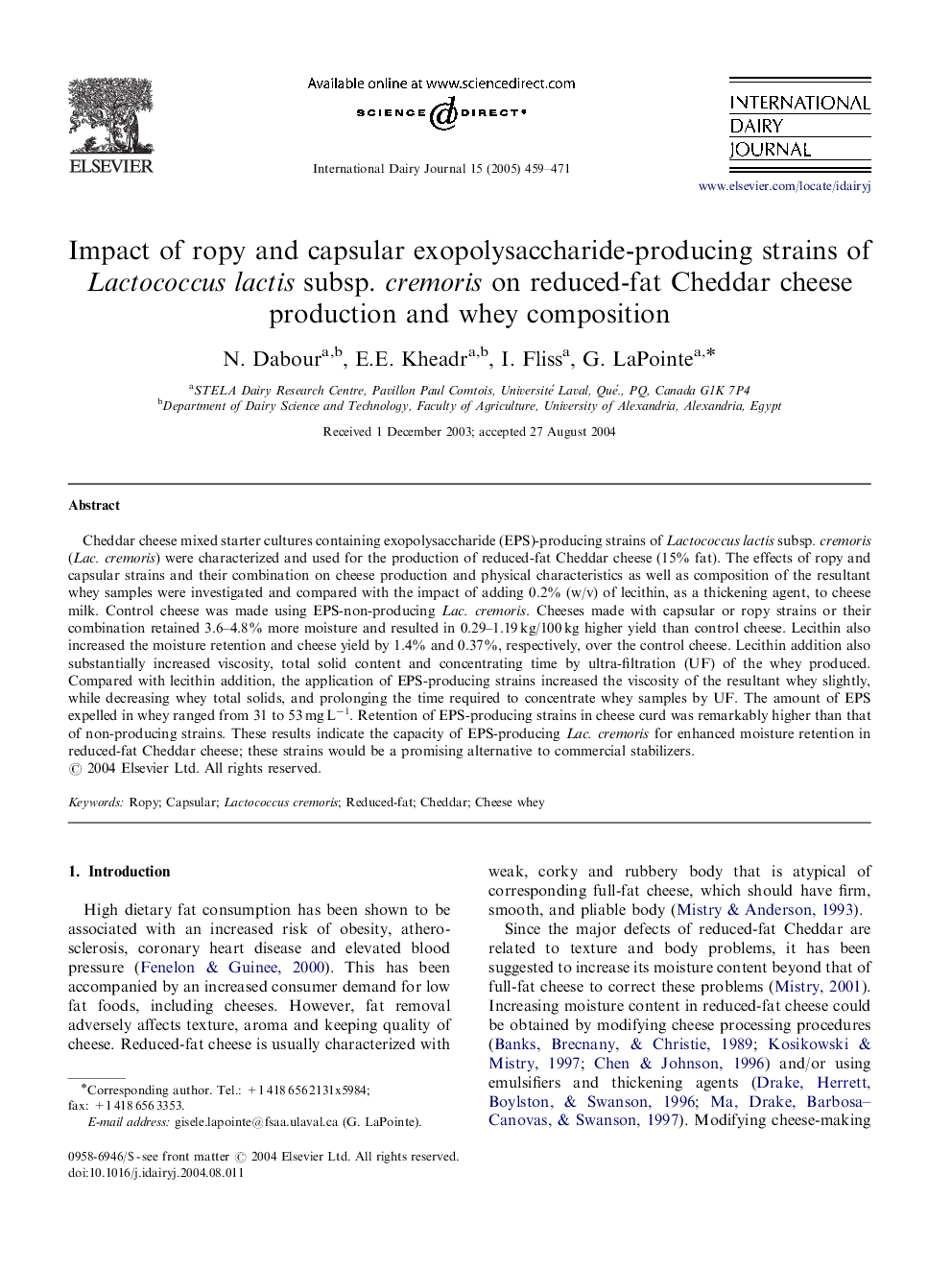| Article ID | Journal | Published Year | Pages | File Type |
|---|---|---|---|---|
| 8979185 | International Dairy Journal | 2005 | 13 Pages |
Abstract
Cheddar cheese mixed starter cultures containing exopolysaccharide (EPS)-producing strains of Lactococcus lactis subsp. cremoris (Lac. cremoris) were characterized and used for the production of reduced-fat Cheddar cheese (15% fat). The effects of ropy and capsular strains and their combination on cheese production and physical characteristics as well as composition of the resultant whey samples were investigated and compared with the impact of adding 0.2% (w/v) of lecithin, as a thickening agent, to cheese milk. Control cheese was made using EPS-non-producing Lac. cremoris. Cheeses made with capsular or ropy strains or their combination retained 3.6-4.8% more moisture and resulted in 0.29-1.19 kg/100 kg higher yield than control cheese. Lecithin also increased the moisture retention and cheese yield by 1.4% and 0.37%, respectively, over the control cheese. Lecithin addition also substantially increased viscosity, total solid content and concentrating time by ultra-filtration (UF) of the whey produced. Compared with lecithin addition, the application of EPS-producing strains increased the viscosity of the resultant whey slightly, while decreasing whey total solids, and prolonging the time required to concentrate whey samples by UF. The amount of EPS expelled in whey ranged from 31 to 53 mg Lâ1. Retention of EPS-producing strains in cheese curd was remarkably higher than that of non-producing strains. These results indicate the capacity of EPS-producing Lac. cremoris for enhanced moisture retention in reduced-fat Cheddar cheese; these strains would be a promising alternative to commercial stabilizers.
Related Topics
Life Sciences
Agricultural and Biological Sciences
Food Science
Authors
N. Dabour, E.E. Kheadr, I. Fliss, G. LaPointe,
